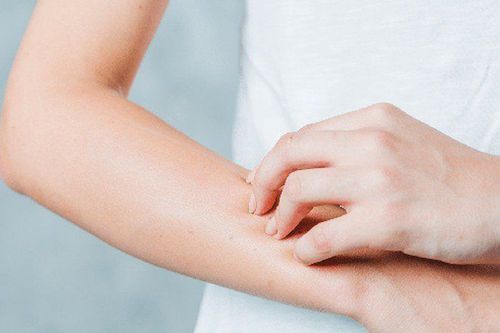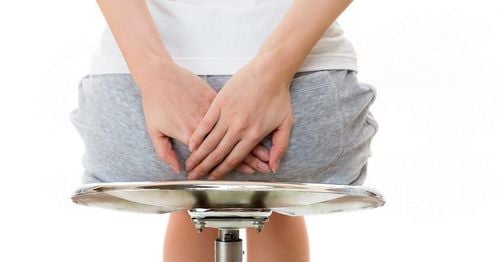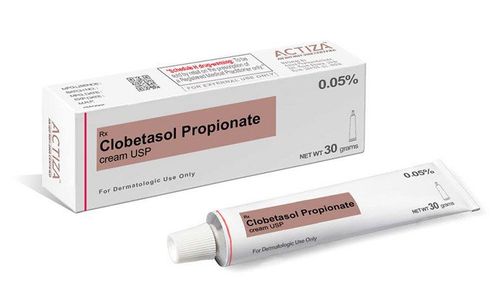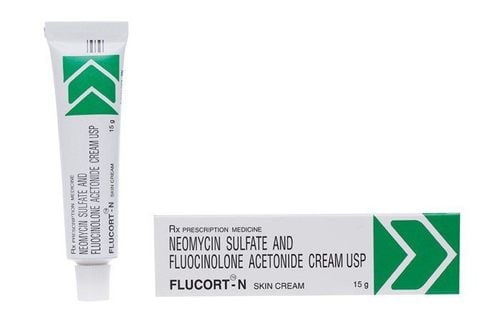This is an automatically translated article.
Lidopin Cream contains Lidocain, which is applied topically to treat symptoms of itching, pain caused by eczema, insect bites, minor burns,... Pay attention to clean and dry the damaged skin before applying the medicine.
1. What is the effect of Lidopin?
Lidopin Cream contains Lidocaine, which is a local anesthetic, which helps to temporarily lose sensation in the skin and mucous membranes.
Lidopin Cream is used topically to treat symptoms of itching, pain caused by eczema, insect bites, minor burns, scratches, ... and some other problems of the genital area, anus such as anal fissures. vagina , itching around the vagina , rectum .
In addition, Lidopin Cream is also used to reduce discomfort when performing some procedures such as colonoscopy, cystoscopy,...
Lidopin Cream is used equally:
Do Clean and dry the affected area, then apply a thin layer of Lidopin Cream, usually 2-3 times a day. If using lidocaine aerosol, shake the canister well before use. Hold the canister 8-13cm away, spray until the affected skin is wet. If the affected area is on the face, spray the medicine on your hands and apply it to your face. Do not spray near eyes, nose or mouth. If using Lidocaine foam, shake the bottle well before use, spray foam on hands, and apply to affected skin. Do not use Lidopin cream on large areas of skin, after applying it do not cover the skin with gauze, plastic sheets or heat because it will increase the risk of serious side effects. Wash your hands immediately after applying the medicine unless you are applying the medicine to one area of your hands. Avoid getting the medicine in your eyes, nose or ears. If Lidopin cream gets on these areas, wash it off immediately with clean water. Dosage is based on the patient's medical condition and response to treatment. Do not apply Lidopin cream more often and for longer than directed. Tell your doctor if you use Lidopin cream and your skin condition does not improve or gets worse.
2. What are the side effects of Lidopin cream?
Common side effects when applying Lidopin cream are redness, stinging, temporary swelling at the site of application. Tell your doctor if these side effects of Lidopine are severe or persist.
Most people using Lidopine do not experience serious side effects. However, the patient needs to be very vigilant, immediately notify the doctor if after taking the drug experience the following side effects:
Slow breathing, shallow breathing, convulsions; pale, bluish-gray skin; Unusual fatigue, shortness of breath; fast, slow, or irregular heartbeat. Serious allergic reactions to Lidopin cream are very rare, but the consequences can be very serious. Tell your doctor right away if you develop new or worsening of an existing rash after using this medicine, itching, new or worsening swelling (especially of the face, tongue, neck) throat), severe dizziness, trouble breathing,... In addition, the patient should tell the doctor if after applying Lidopin cream, the body appears side effects not listed above.

Tác dụng phụ thường gặp khi bôi thuốc Lidopin cream là mẩn đỏ, châm chích, sưng tấy tạm thời tại vị trí bôi thuốc
3. Precautions when using Lidopin cream
Before using Lidopin cream, the patient should notify the doctor if he/she has one of the following conditions:
Allergy to Lidocaine or other ingredients of the drug Allergy to other amide anesthetics such as Bupivacaine, Prilocaine, ... There is a history of diseases, especially stretch marks, infections in the area where lidocaine is used, heart disease, liver disease, methemoglobinemia,... Some other precautions when using Lidopin cream include :
If the patient intends to have an MRI, please inform the staff of the MRI room that you are using Lidopin cream. Some dosage forms of the drug may contain metal, posing a risk of serious burns during an MRI scan. Before surgery or dental procedures, patients should tell their doctor or dentist all the medicines they are taking, including Lidopin cream. Use caution when giving the drug to children because children are at a higher risk of side effects than adults. Lidopin cream is only used for pregnant women when absolutely necessary, with a doctor's prescription. Lidopin cream may pass into breast milk but is unlikely to harm a nursing infant. Consult your doctor before taking Lidopine while breastfeeding.
4. Some other notes when using Lidopin cream
To avoid the risk of interaction between Lidopin cream and other drugs used at the same time, before using Lidopin, the patient should tell the doctor about all prescription and non-prescription drugs being used. Do not arbitrarily use, stop, or change the dose of any medicine without the approval of your doctor.
Lidopin cream can be harmful if inhaled or swallowed. Overdose symptoms may include drowsiness, irregular heartbeat, convulsions, etc. Take the patient to a medical facility immediately if an overdose of Lidopin cream occurs and the above symptoms appear.
If you take your Lidopin cream on a regular schedule and miss a dose, take it as soon as you remember. If it is almost time for your next dose, skip the missed dose of Lidopin cream and take your next dose at the usual time. Do not apply more Lidopin cream to make up for the missed dose.
Store Lidopin cream at room temperature, avoid direct sunlight and high temperature, do not freeze the medicine.
Please dial HOTLINE for more information or register for an appointment HERE. Download MyVinmec app to make appointments faster and to manage your bookings easily.
Reference source: webmd.com













